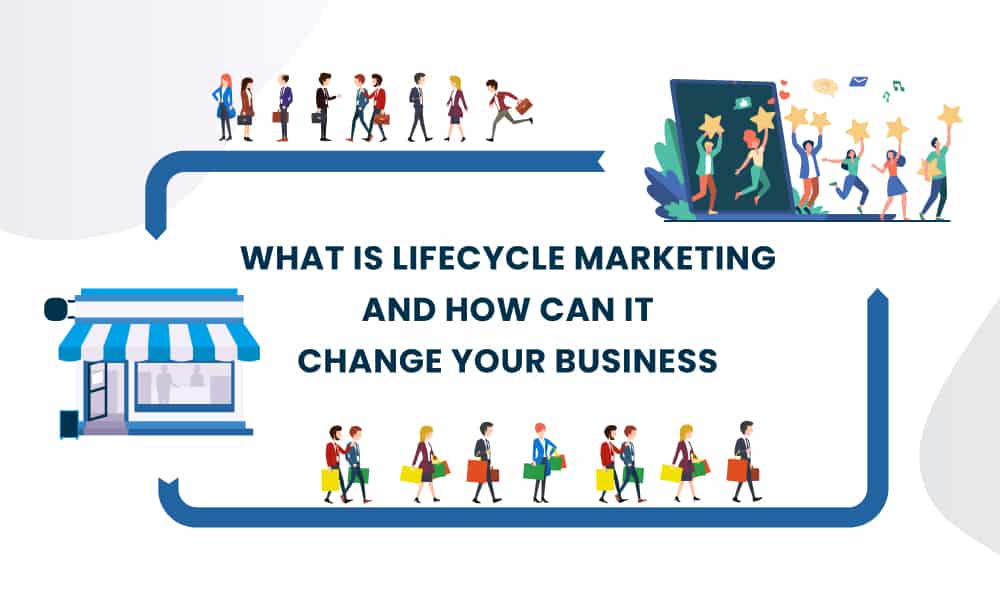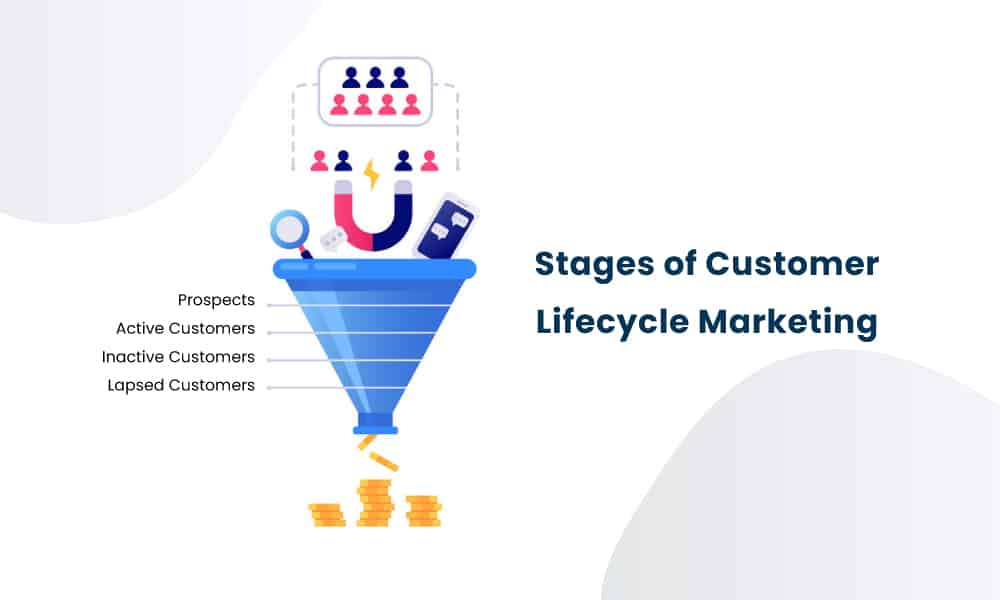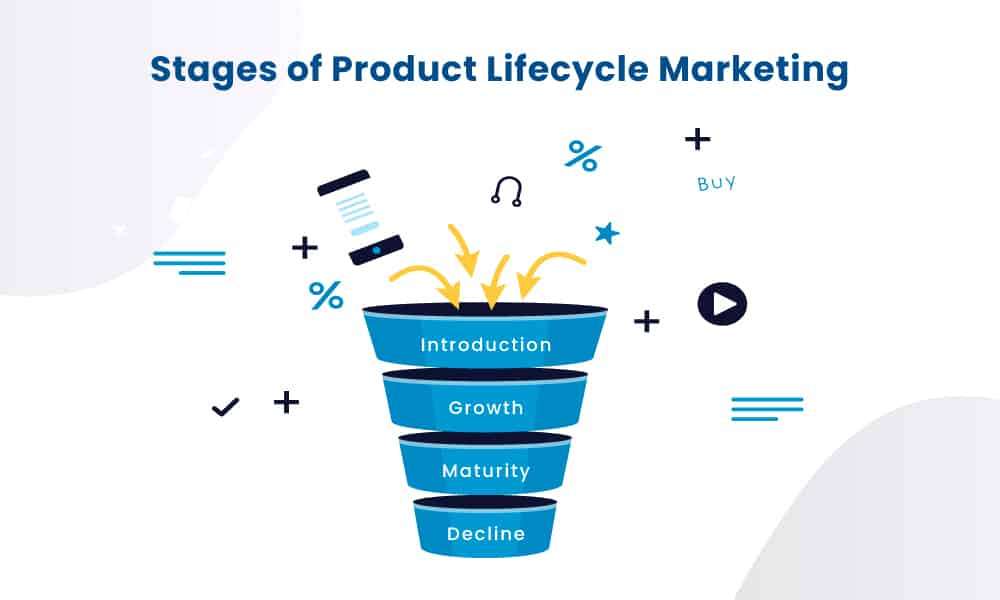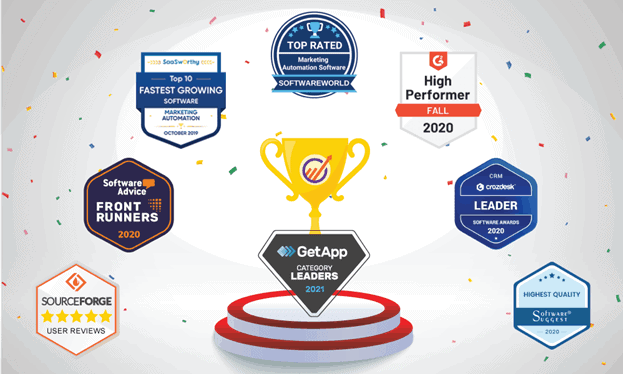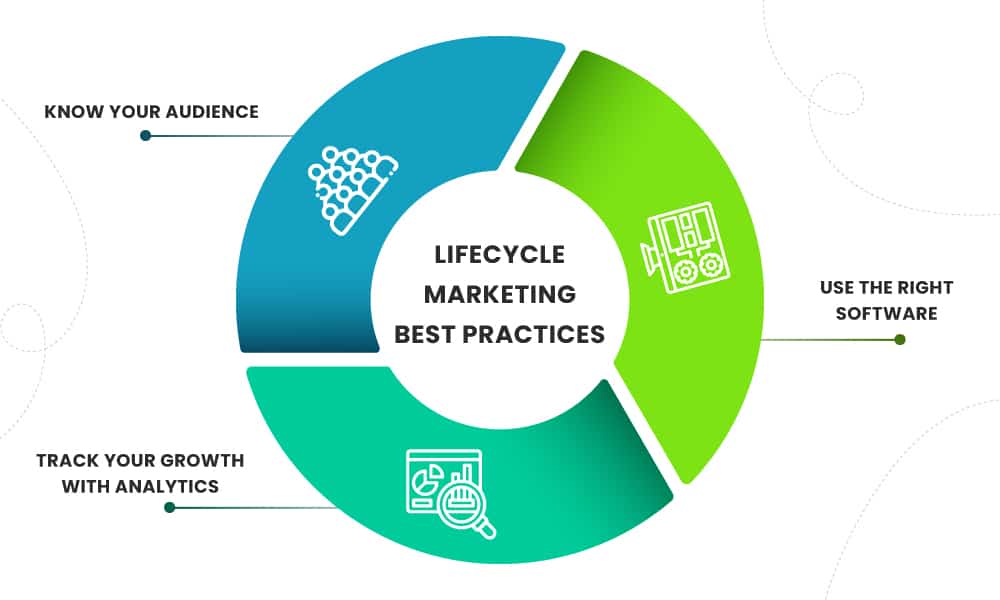In today’s rapidly evolving digital landscape, marketing strategies have become more diverse and sophisticated than ever before.
While email marketing and social media marketing have gained significant popularity and proven their effectiveness, there’s another powerful marketing approach that deserves attention: lifecycle marketing.
This comprehensive marketing model holds the key to nurturing customer relationships and maximizing the potential of every interaction with your brand.
Without implementing lifecycle marketing campaigns, businesses risk losing valuable customers even after they have made a purchase.
In this insightful blog post, we will delve into the concept of customer and product lifecycle marketing, shedding light on their various stages and highlighting their significance.
By understanding the intricacies of these lifecycles, you can unlock the potential to not only attract new customers but also retain and engage existing ones throughout their journey with your brand.
Furthermore, we will introduce you to some tried and tested best practices that will empower you to effectively implement lifecycle marketing strategies.
By leveraging these strategies, you will be able to convert more leads into loyal customers, drive repeat purchases, and ultimately boost your revenue.
So, if you’re ready to take your marketing efforts to the next level and establish long-lasting relationships with your customers, keep reading.
This comprehensive guide will equip you with the knowledge and tools you need to harness the power of lifecycle marketing campaigns and achieve sustainable growth for your business.
Table of Contents
What Is Customer Lifecycle Marketing?
The marketing messages you share with a customer once they’re first aboard your company are not the ones you share with a long-term customer.
That’s the crux of customer lifecycle marketing models. For customer lifecycle marketing, you must personalize your approach as the lead goes through the different stages of the marketing funnel, altering your messaging for every stage.
The Stages of Customer Lifecycle Marketing
To understand customer lifecycle marketing better, you need to know what stages there are in a customer’s lifecycle with your brand. To keep it simple, we can divide the customer’s journey into four stages:
1. Prospects
At the beginning of the funnel are your prospects. By definition, a prospect is a potential customer. They’re not entering your marketing funnel totally blind, as they’ve done some cursory research into your company or your products and services.
They have at least a mild interest in what you sell, but they’ve made no move to purchase anything yet. Prospects are more qualified than the average lead, so they’re valuable.
2. Active Customers
Through the efforts of your marketing pros, the qualified prospect has now become a customer. This change is cemented once the prospect makes their first purchase.
Your goal at this stage is to continue nurturing and engaging with the customer so they’ll buy more products/services from your company in the future. If they purchase from you often enough, then you might qualify them as a frequent customer.
Once in this part of your marketing funnel, the goal is to keep the customer there. By personalizing your communications with the customer, recommending products and services they’re interested in, and prioritizing their satisfaction, the customer will remain active.
3. Inactive Customers
While it would be great if all your customers were active forever, that’s not how life works. Eventually, some customer segments can become inactive customers instead.
These customers have made a purchase from your company, maybe even several purchases. The time between their last purchase and now is becoming bigger and bigger.
What can cause active customers to become inactive? Sometimes, it comes down to factors that are outside of your control. The needs of your customer might have changed, their financial situation could be different, or perhaps they’ve outgrown your products or services.
These customers might not be making purchases now, but they’re not a lost cause yet. By re-engaging with the customer at this stage of the marketing funnel, you could potentially bring them back to active status.

4. Lapsed Customers
The fourth stage of the marketing funnel involves your lapsed customers. Just like you don’t want your active customers to become inactive, you certainly don’t wish for your inactive customers to lapse.
Whether through neglect on the part of your sales and/or marketing teams or due to the above-mentioned factors, lapsed customers are on the brink of exiting the funnel altogether. It’s been a very long time since they’ve bought anything. That doesn’t seem to be changing anytime soon either.
Again, a re-engagement campaign can be a last-ditch effort to recover these customers, but by this stage, holding onto them isn’t always possible.
Read also: 7 Great Customer Lifecycle Marketing Strategies to Make More Money
What Is Product Lifecycle Marketing?
Like your customers go through a marketing funnel for customer lifecycle marketing, so too does each new product your company introduces. Marketing that is done with this funnel in mind is called product lifecycle marketing.
A product has a lifecycle that, while it can be stretched out over years, is finite. Think of the iPhone, for example.
The iPhone 6 came out in 2014. It’s since been eclipsed by the iPhone 7, 8, X, 11, and the iPhone 12. You can’t go to a store and buy the iPhone 6 new anymore because it’s long since been out of production.
Tech products are a great way to see the product lifecycle in action, often very quickly. The world of tech moves at a lightning-fast speed, so newer models are always coming out that encompass the latest technology.
Read also: Customer Lifecycle Management: CLM Guide for Business Owners
The Stages of Product Lifecycle Marketing
Like customer lifecycle marketing, the marketing campaigns for a product need to consider its lifecycle and adapt to changes. The product lifecycle has four distinguishable stages. Let’s take a closer look:
1. Introduction
The introduction stage is among the most exciting. You and your team have worked for months, maybe years on a new product or service, and it’s going to be unveiled to the world soon.
Before that happens, your new product or service requires a full-scale marketing campaign to drive awareness and promote the multitude of benefits your product or service provides.
Your marketing team, in promoting the new product or service, must be able to answer pertinent questions about it. For example, who is the target audience for the new product? Is it a large market or a niche market?
What problems does the new product solve or what needs does it fulfill? What does the product do that its competitors don’t?
Having this product research available will allow marketers to do their jobs more effectively, which could increase the success of your product.
Also, in the introductory phase or just before, your company will have to determine the price for your new product or service. This can be a make-or-break turning point. If you underprice your product, it will undoubtedly attract a crowd, but your company won’t turn a profit.
By overpricing your product, whether intentionally or due to lack of experience, your potential customers will balk at the prices and flock to the competition.
2. Growth
Once your product is on the shelves, you have to play the waiting game to see how it performs. An uptick in sales is indicative of your business entering the growth stage.
At this stage, you need a marketing strategy that addresses several business-related questions. For instance, are you positioning your product so it succeeds? Look at the products and services your competitors are releasing and how those are performing. Is your new product outselling the competition?
All marketing at this stage must take into account where your product stands in the market. Don’t try to market your product as the category leader if it is not, and avoid comparisons with smaller brands too.
A growing product must be marketed as what it is – a new product that is fast becoming a market favorite, and may offer greater value for money than more established products.
3. Maturity
The third stage of the product lifecycle marketing funnel is maturity. This is the stage that companies most eagerly await, as it leads to the greatest sales for the product.
By the maturity stage, you have a good amount of product supply, so production costs are lower than they are in the growth stage. You’re also not marketing your new product as fervently because it’s not that new, and more so because a larger audience segment knows about it.
However, marketers can’t rest on the new laurels in this product maturity stage. Your team should work to identify all the audience segments so that they can re-target some audience groups that weren’t interested in the product earlier.
Marketing in this stage needs to leverage testimonials from experts, customer reviews, and any awards that your product may have garnered.
Take a look at EngageBay’s very own example here:
4. Decline
The last stage of a product lifecycle is decline. This is inevitable and is marked by reduced demand and equally reduced profits.
Marketing your product differently in this stage can mitigate some of the damage. There can always be audience segments who’d prefer your product over the competition, so you must target them now.
As you may have guessed, marketing in this stage requires you to reach out to all the people who’ve purchased your product and remind them of how wonderful it has been for them. This can trigger some more buying, and that can result in great returns on this marketing.
👉Unlock the potential of lifecycle marketing software with our in-depth guide – transform your marketing strategy today! 🔑
Lifecycle Marketing Best Practices
If your company hasn’t yet defined its customer lifecycles or product lifecycles, it’s never too soon to start. Here are some best practices that will help you get started.
Know Your Audience
No lifecycle marketing campaign is complete without audience research. Understanding your audience as they move through your marketing funnel is crucial so you can nurture them appropriately based on the stage they’re in.
This goes back to what we talked about in the beginning of this article. Your long-term customers don’t need the same level of engagement as your new customers. Without knowing who’s where in the buying journey, you can’t successfully market your products.
You’d also have no way of knowing which audience groups would be interested in your new products or services. That’s a surefire way to keep your new product stuck in the introduction phase, and it might then jump straight to the decline stage.
Use the Right Software
Mastering lifecycle marketing isn’t something you have to do without help. With a software solution like EngageBay, you can generate leads automatically, score them automatically, and even automate the engagement campaigns for them.
This way, you get to save a lot of time and overhead costs even as you increase your sales.
EngageBay’s sales, marketing, and customer service software includes customer relationship management or CRM software for free. For startups or companies on a tight budget, free software is music to the ears!
Track Your Growth with Analytics
Growth within your lifecycle marketing campaign is not always linear. The time it takes to progress from one stage to another in the product lifecycle or the customer lifecycle can take weeks to months.
All along, you must use analytics to determine if your marketing and sales tactics are effective. If you’re not quite grabbing your customers with your current social media campaign or email broadcasts, or if your new product is underselling, reports generated for the right metrics will pinpoint exactly what’s going wrong.
You can then redirect your lifecycle marketing plan to re-target your audience.
Read also: The Circle of Marketing: A Guide to the Marketing Lifecycle
Conclusion
The customer journey holds a wealth of insights that can transform the way you approach marketing.
By delving into what inspires and motivates them, as well as understanding their decision-making process, you can tailor your marketing tactics to precisely match their needs and create a lasting impact.
To help you achieve this level of understanding and personalization, EngageBay stands as a leading customer lifecycle marketing platform.
With EngageBay, you can gain valuable insights into who your customers are and what drives them, starting from their initial visit to your website all the way through their purchase.
Harnessing the power of EngageBay’s lifecycle marketing solution, you can streamline the buying process by delivering personalized and interactive messaging at every stage of the customer’s journey with your brand.
This not only makes the purchasing experience more seamless but also enhances customer satisfaction and boosts conversions.
EngageBay empowers you to reach your customers directly by providing real-time notifications of offers, ensuring your message reaches their inboxes or mobile devices promptly.
Additionally, the platform enables you to instantly personalize product information newsletters based on individual interests and behaviors, creating a highly relevant and engaging experience for each customer.
Furthermore, EngageBay helps optimize customer sales and retention through automated loyalty programs that offer tailored membership benefits.
By rewarding customers for their loyalty, you can enhance their overall experience, strengthen their connection with your brand, and foster long-term relationships.
By utilizing EngageBay’s comprehensive suite of tools, you can gain a deeper understanding of your target audience and communicate with them in relevant ways at every step of their journey, from inquiry to purchase.
This level of personalized engagement ensures that you connect with your customers on a meaningful level, ultimately driving satisfaction, loyalty, and business growth.
In conclusion, by embracing lifecycle marketing and leveraging the power of EngageBay, you can transform your marketing approach, unlock valuable customer insights, and establish a strong foundation for long-term success.
Start harnessing the full potential of your customers’ online journeys today and watch as your business thrives in the ever-evolving digital landscape.
Try the marketing automation software for free today!
